Create Incident Action
- On the home screen, click
Create. - Select
Zaps.
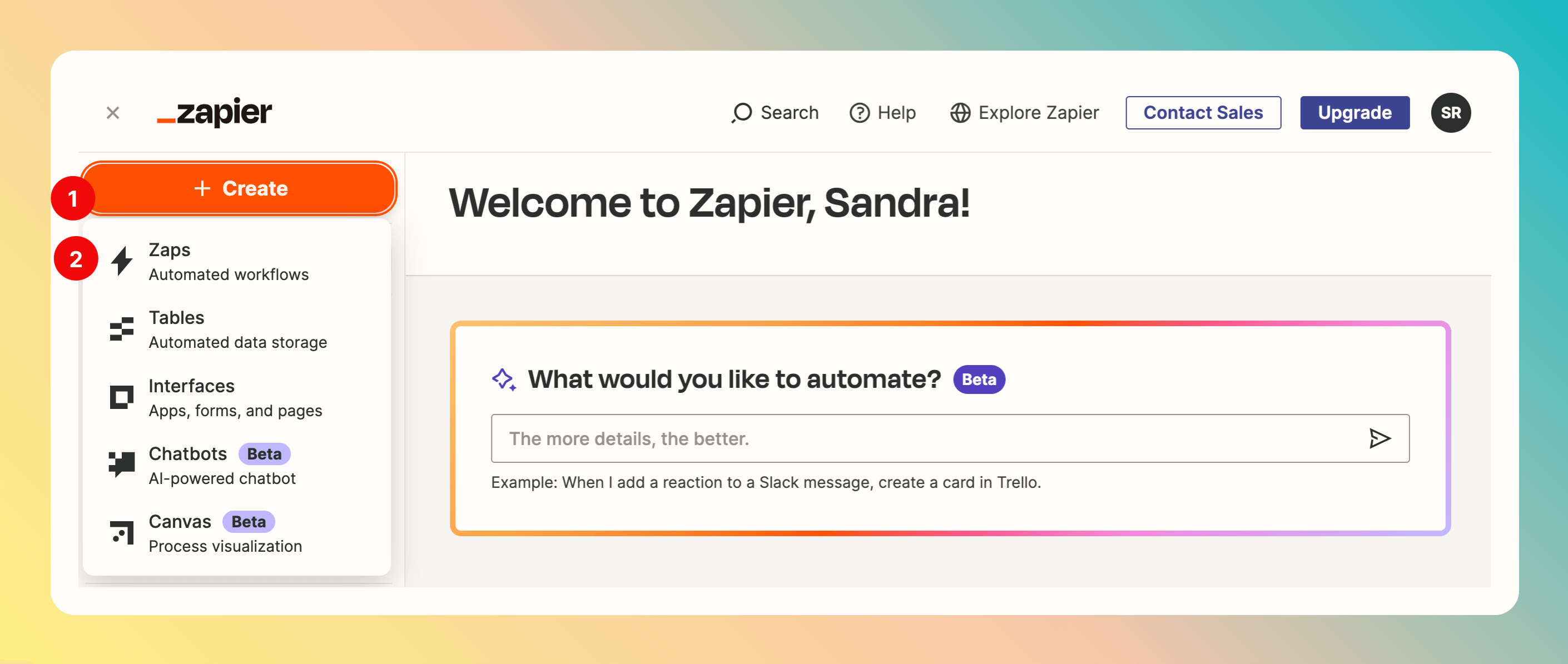
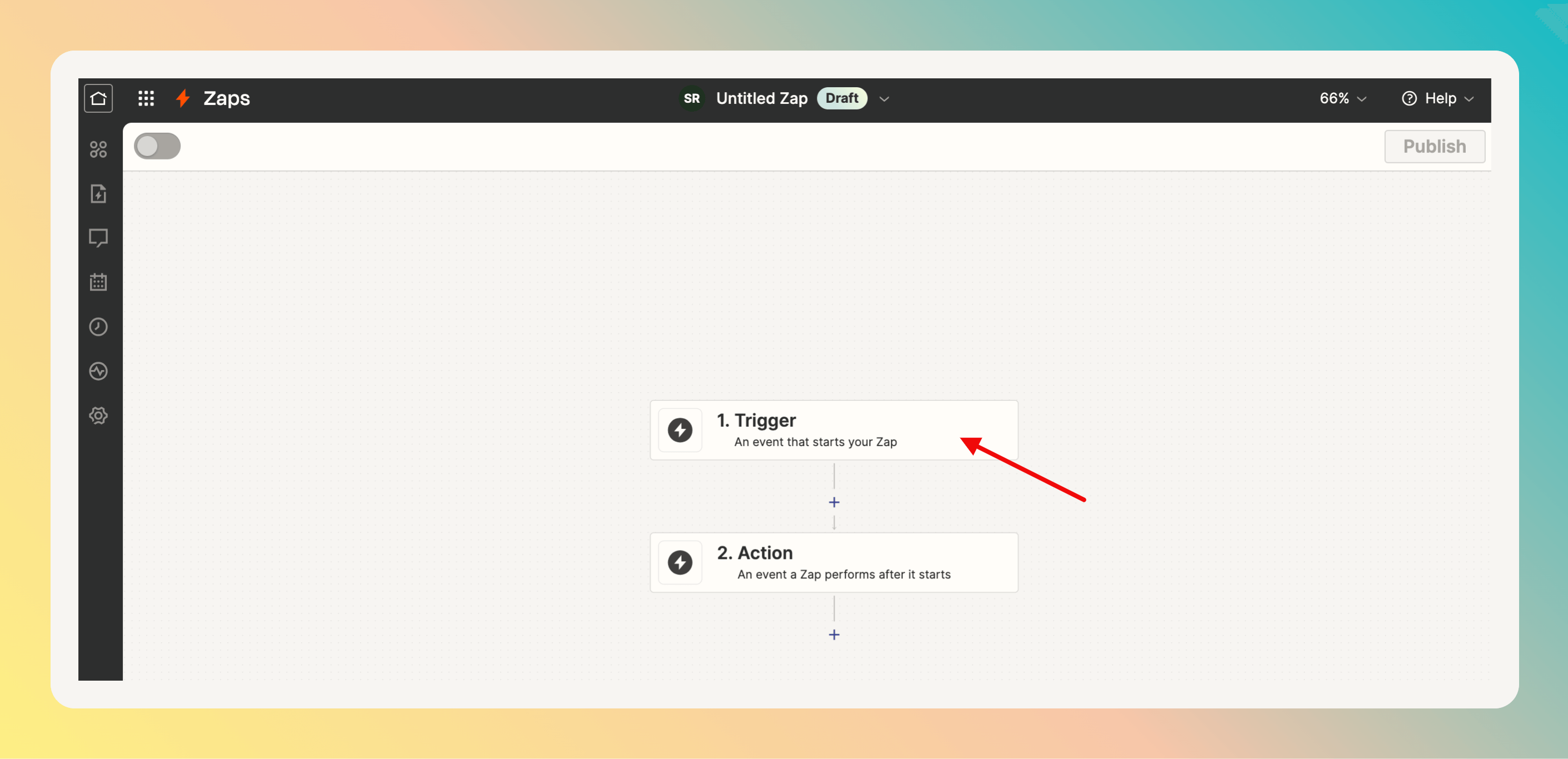
In this example, we want to Trigger a new incident via Gmail. Instead of using Gmail, you could also use other Zapier integrations as a Trigger.

New Labeled Email Event (2) after selecting Gmail as Trigger (1).
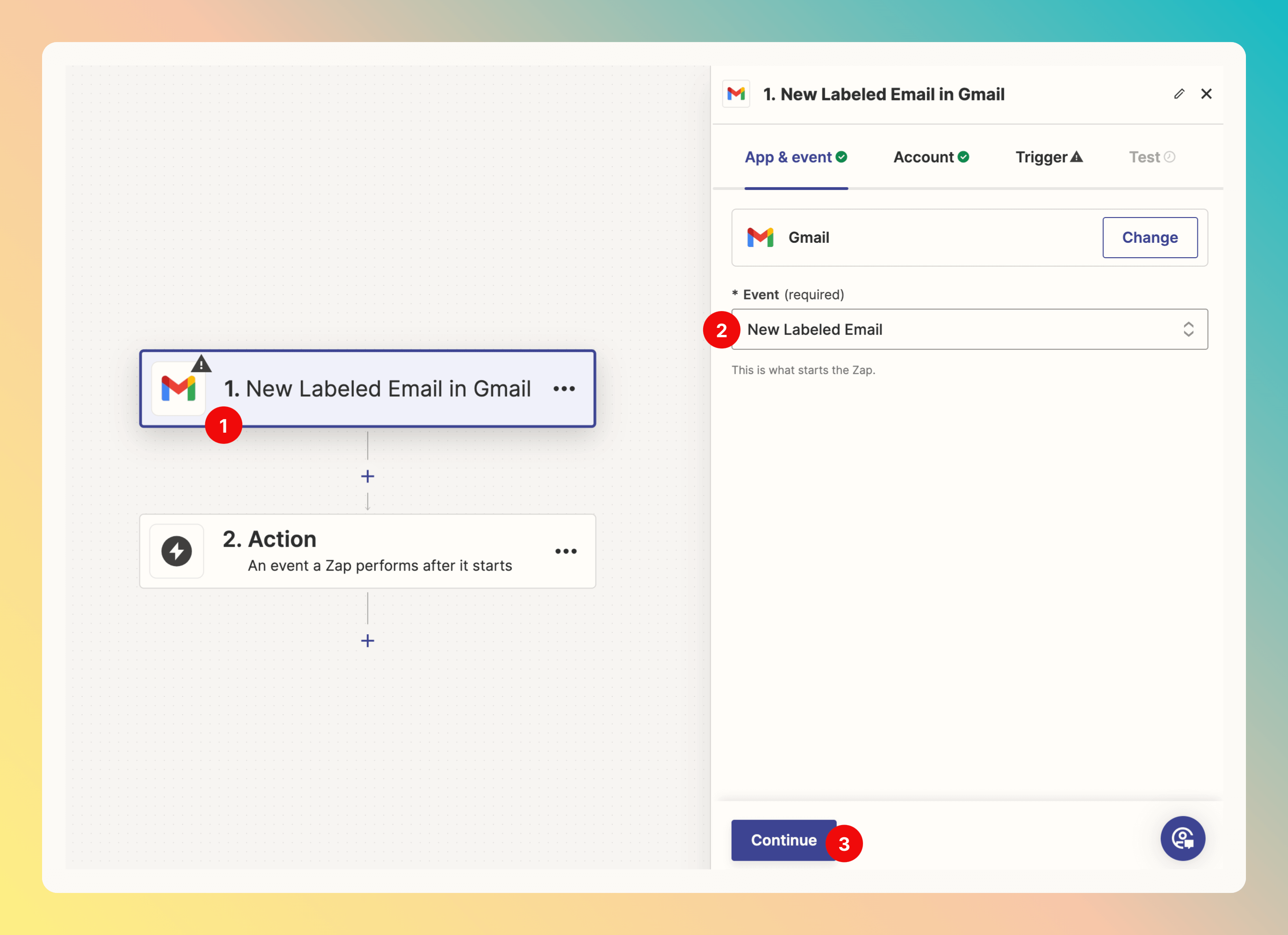
Continue.
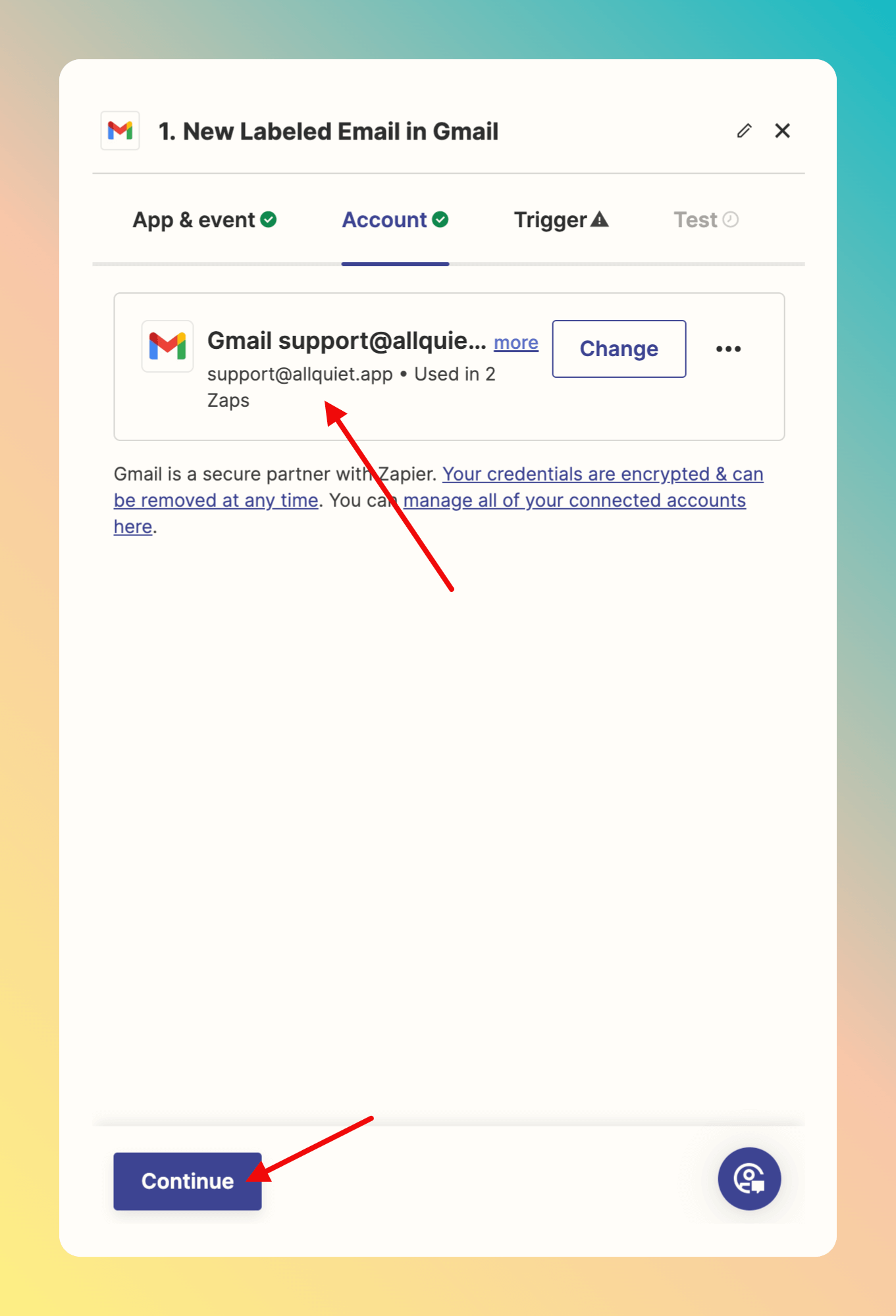
Incident to trigger an All Quiet incident.
After selection, click Continue.
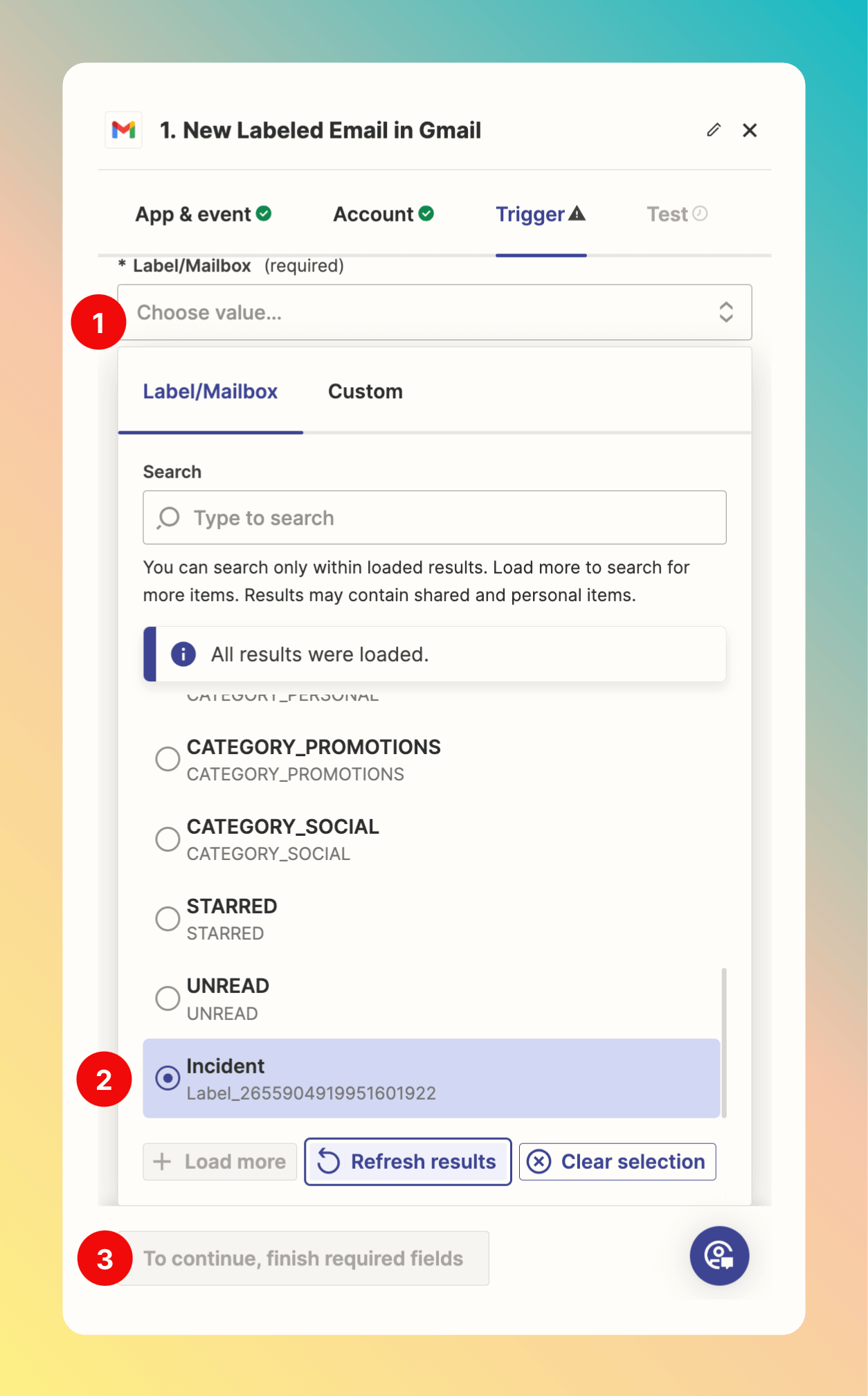
Incident in our connected Gmail account.
- We have to select the email we want to use for a test.
- Then, we can
Continue with the selected record.
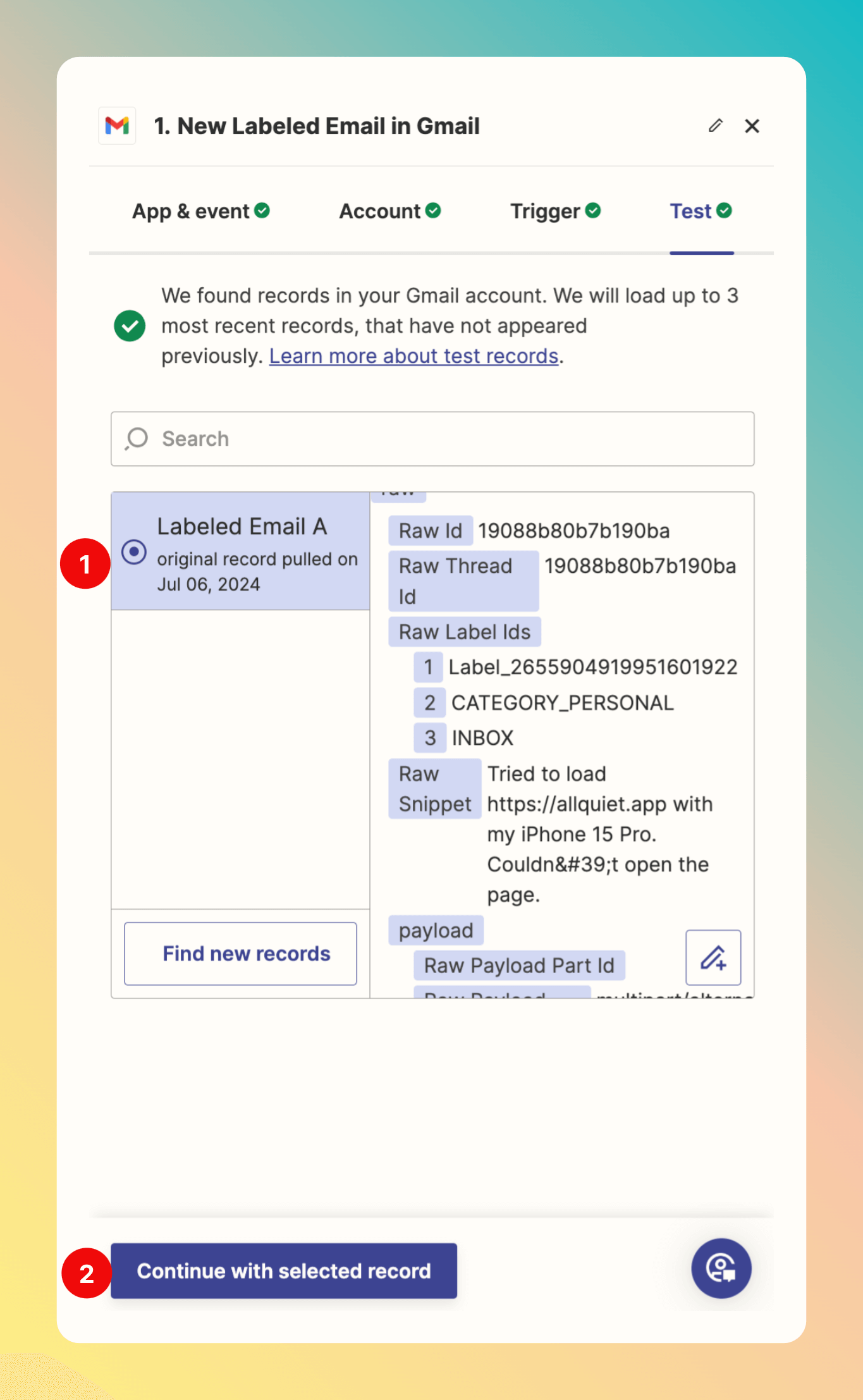
- Search for
All Quiet. - Select it.
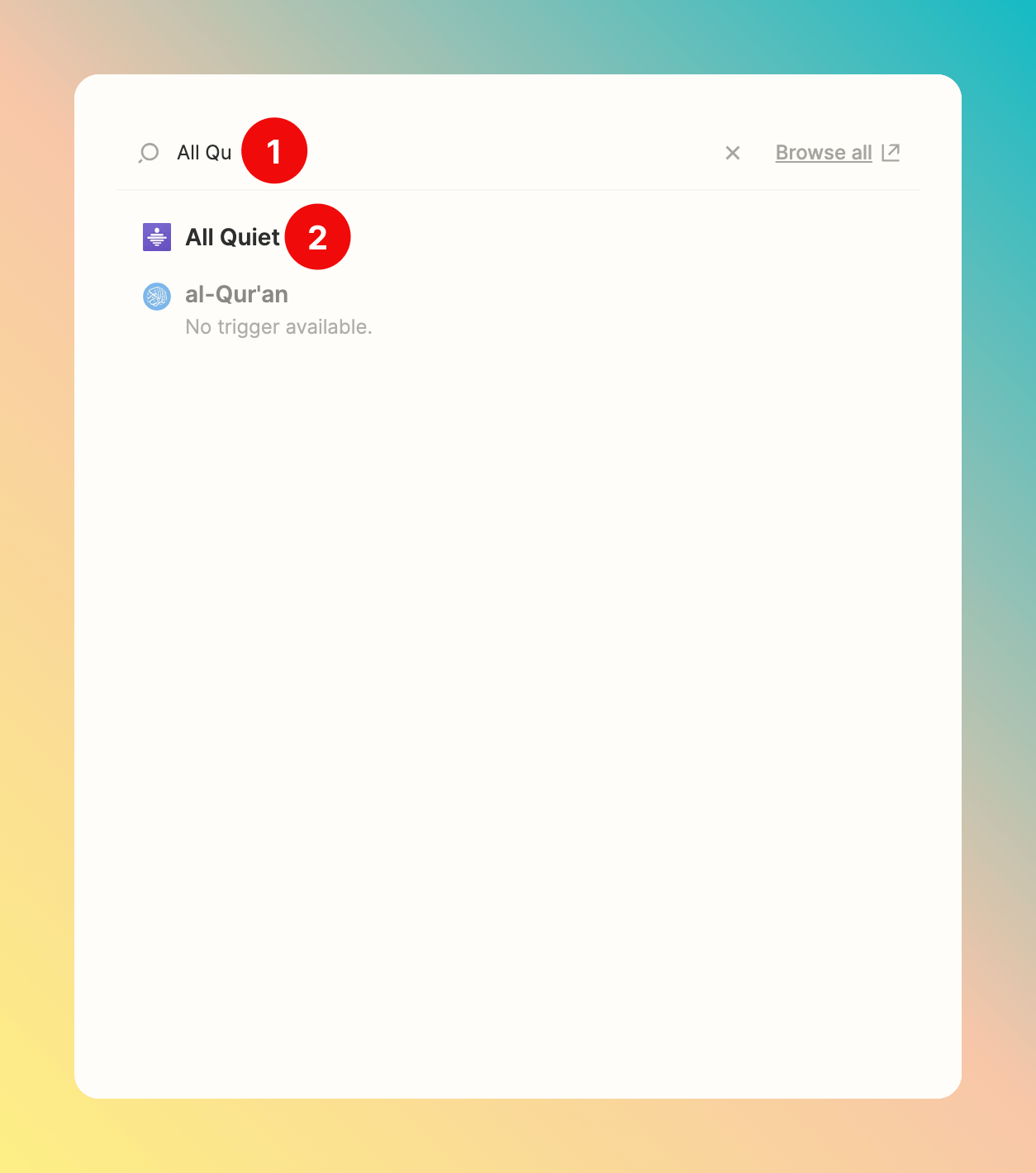
Create IncidentCreate Incident Intent
For now, we select the
Create Incident Action. To learn more about Create Incident Intent Action, see Create Incident Intent Action section.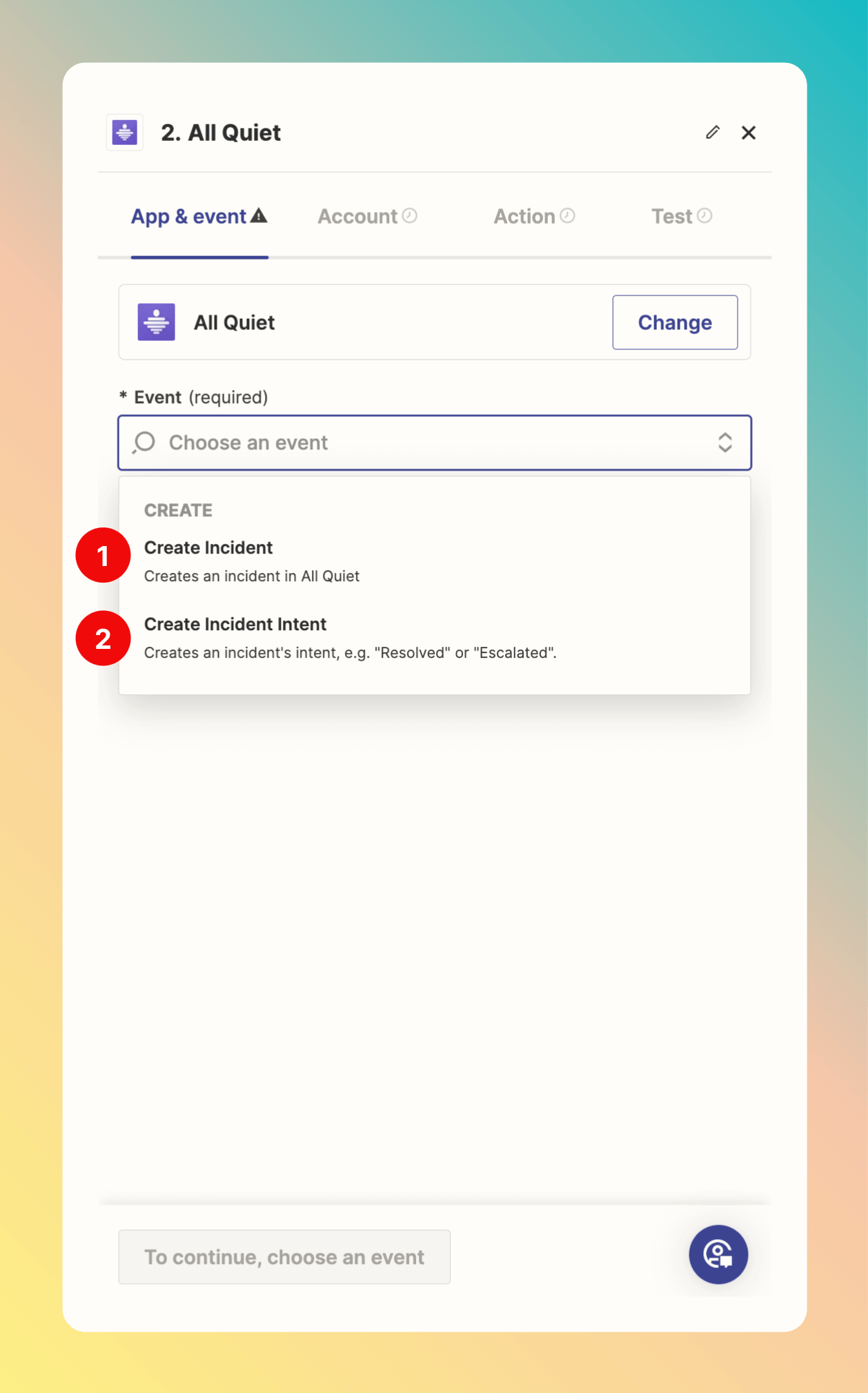
Create Incident and clicking Continue, we need to sign in to our All Quiet Account to connect it with Zapier.
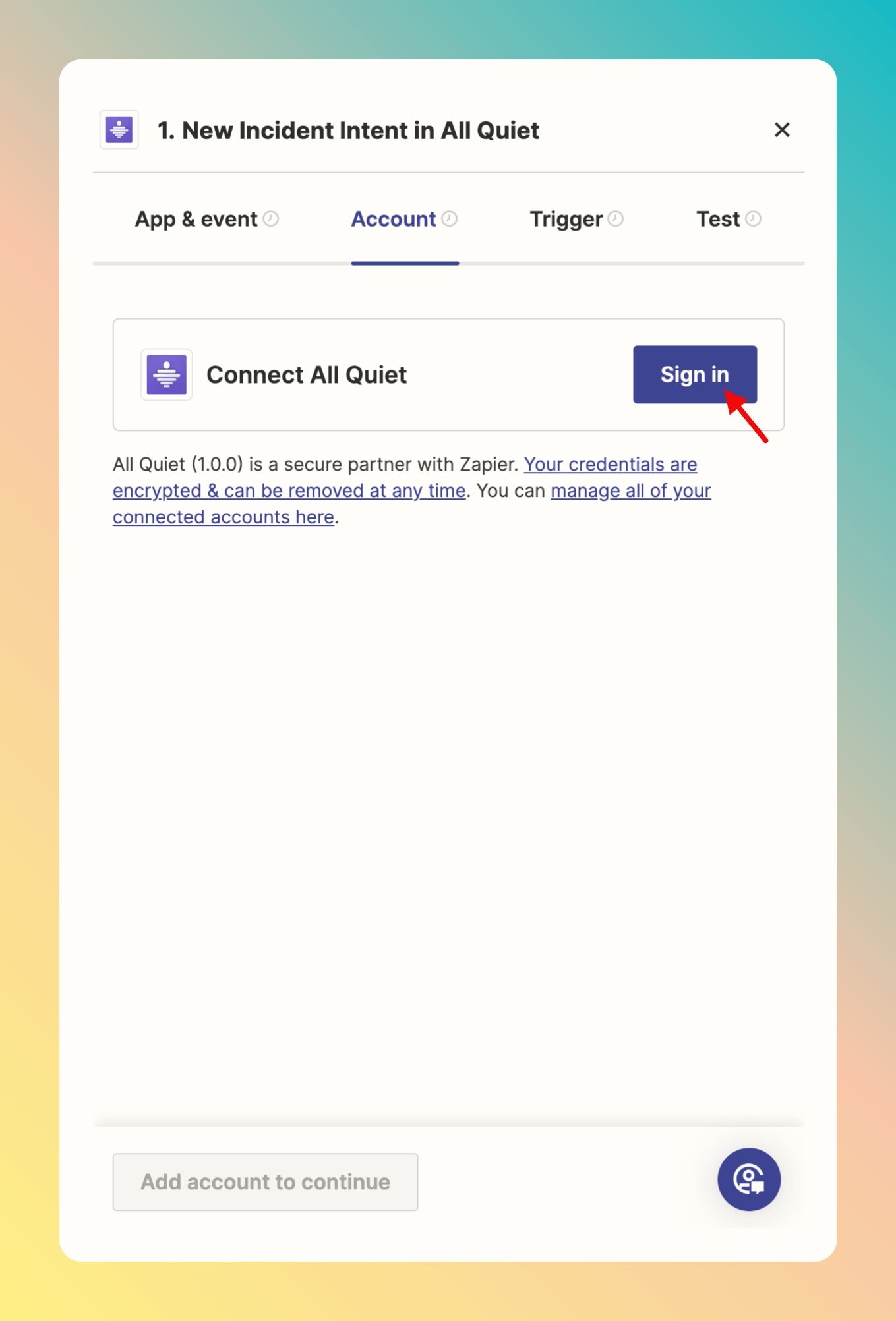
- Integration ID and
- Webhook Secret that you received after creating the outbound integration in All Quiet.
- Also, provide your
Data Storage Region, eitherUSorEU. - After providing the credentials, click
Yes, Continue to All Quiet.
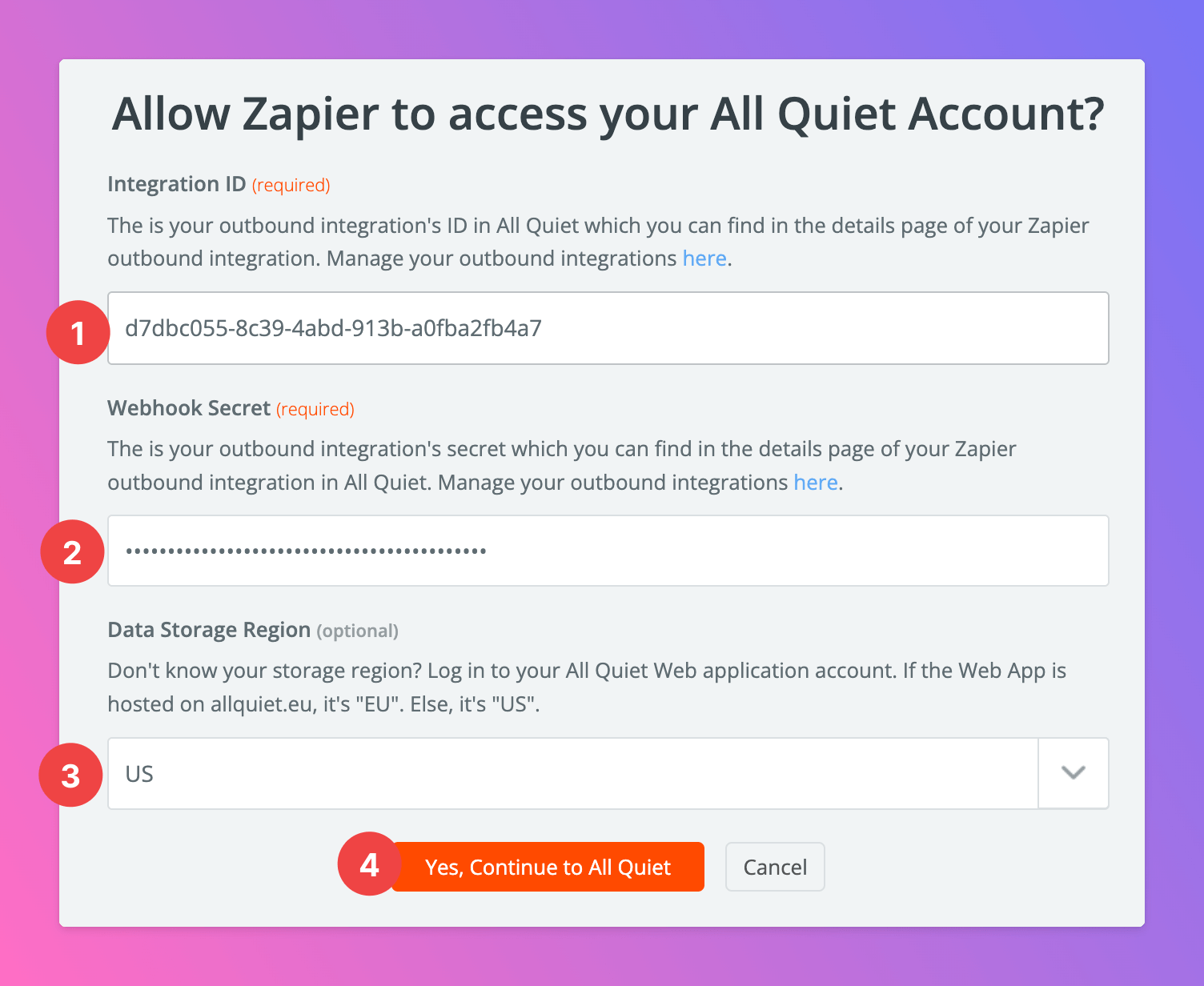
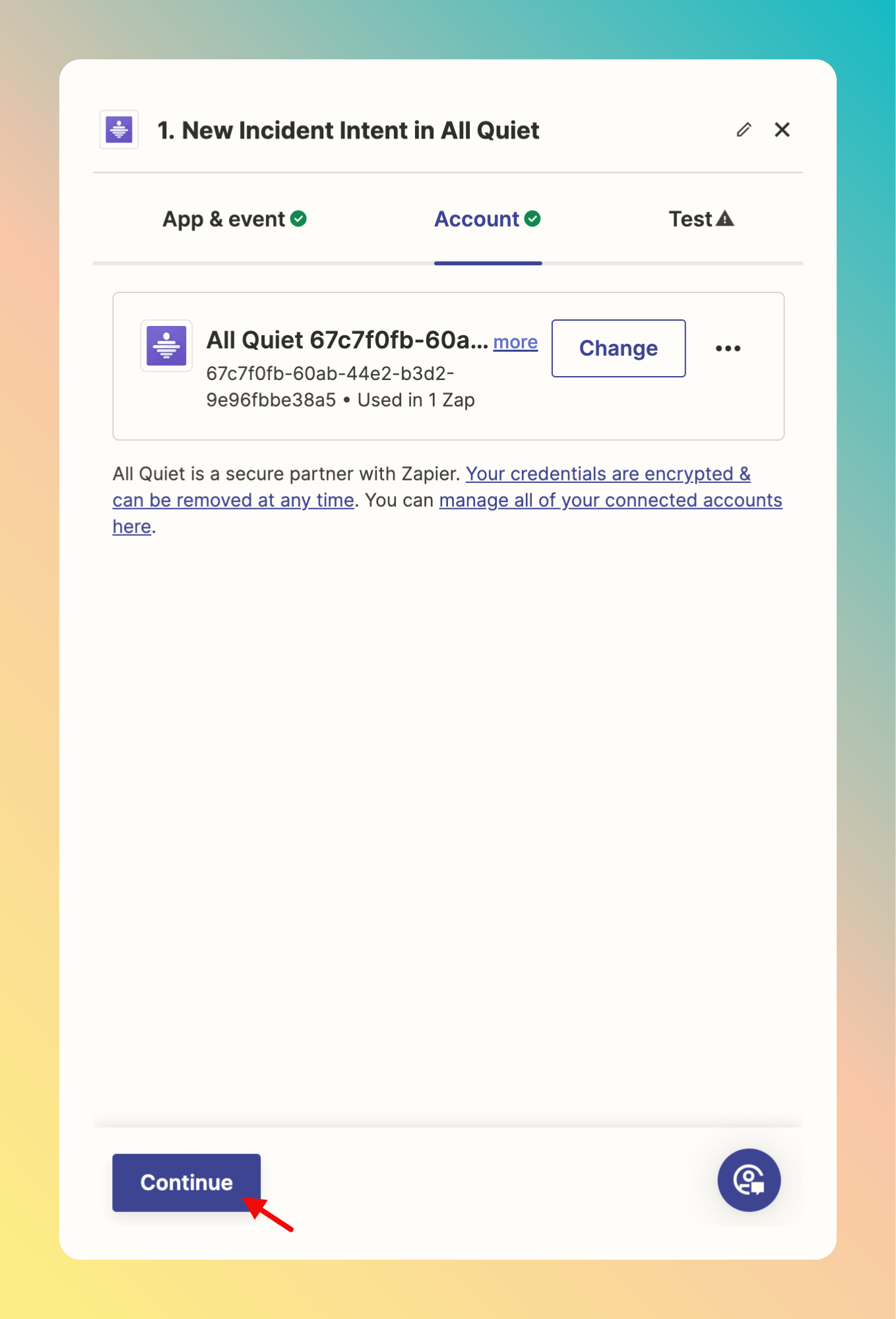
- Create a
Incident Title. Here, we use a combination of text and, in this use case, email variables provided by the Gmail Trigger. - Define the
Severitythat incidents created by labeling emails asIncidentshould have. Here, we selected “Critical”. If you want to have different severities for different mails, you could go ahead and create different labels instead of oneIncidentlabel. - Define the
Attributesof the incident. Here, we added the Subject & Description of the email. - Define the
Statusof the incident. As the incident is created by the labeling, we set the status toOpen. - After configuring the incident, click
Continue.
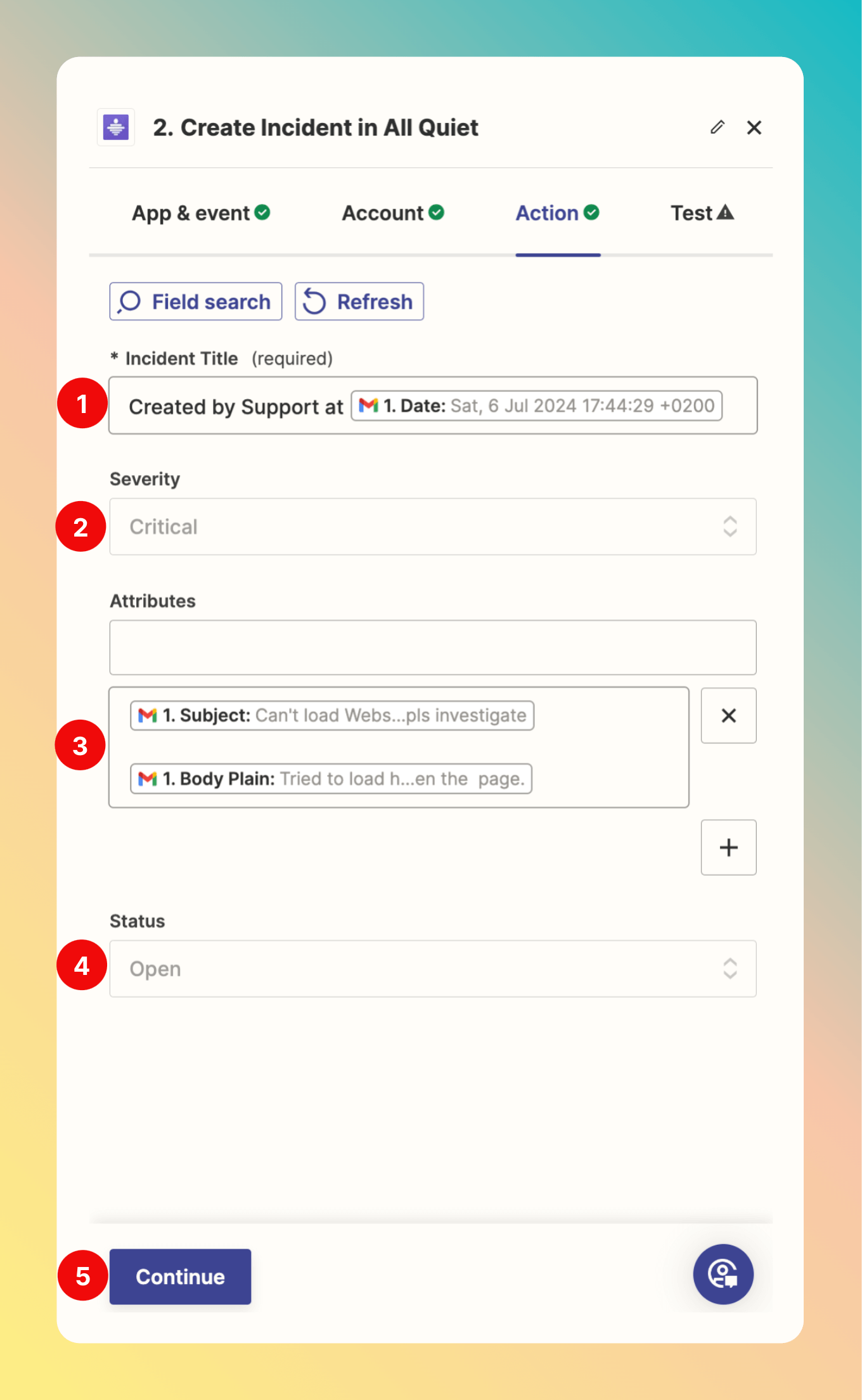
Test step.
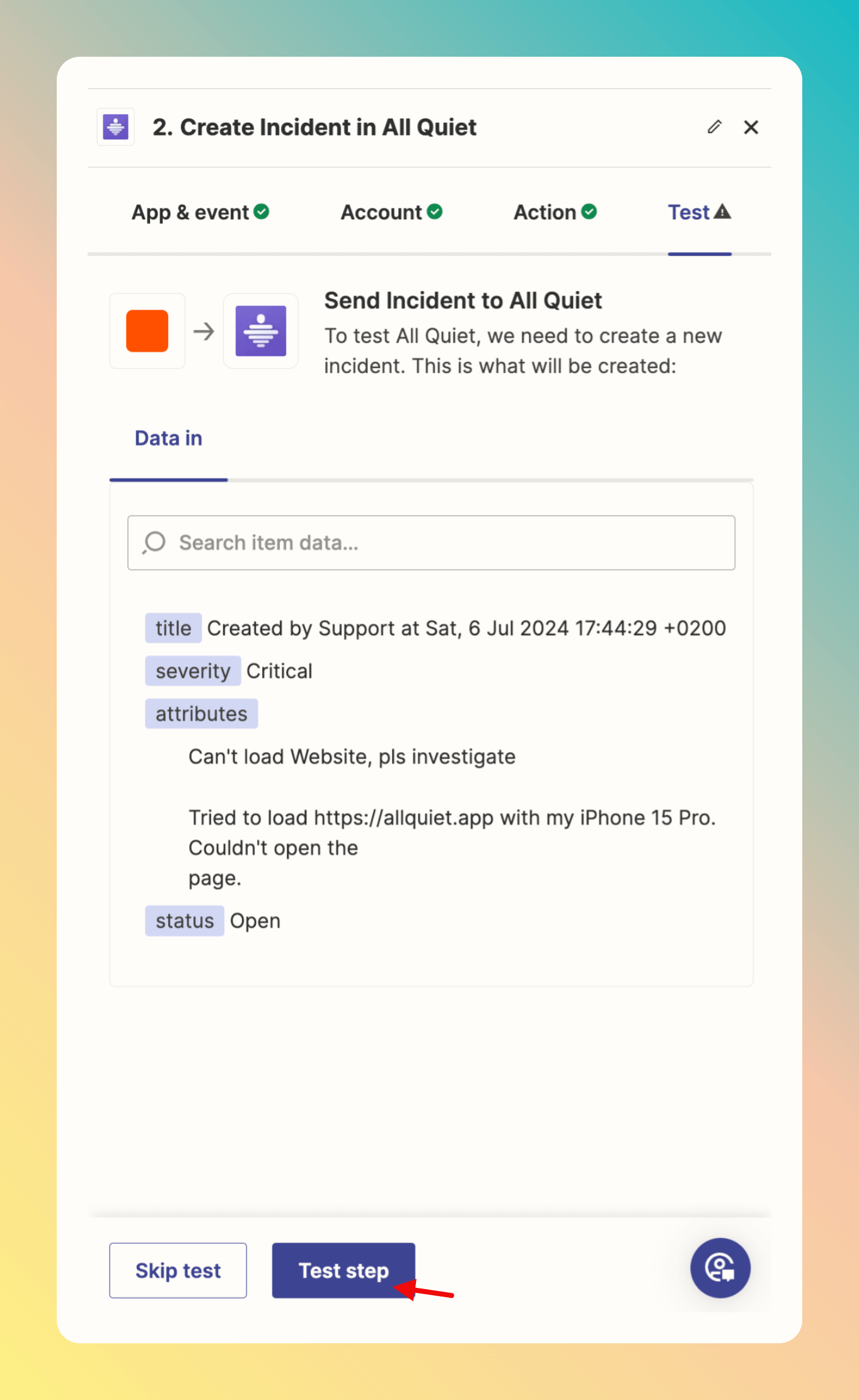
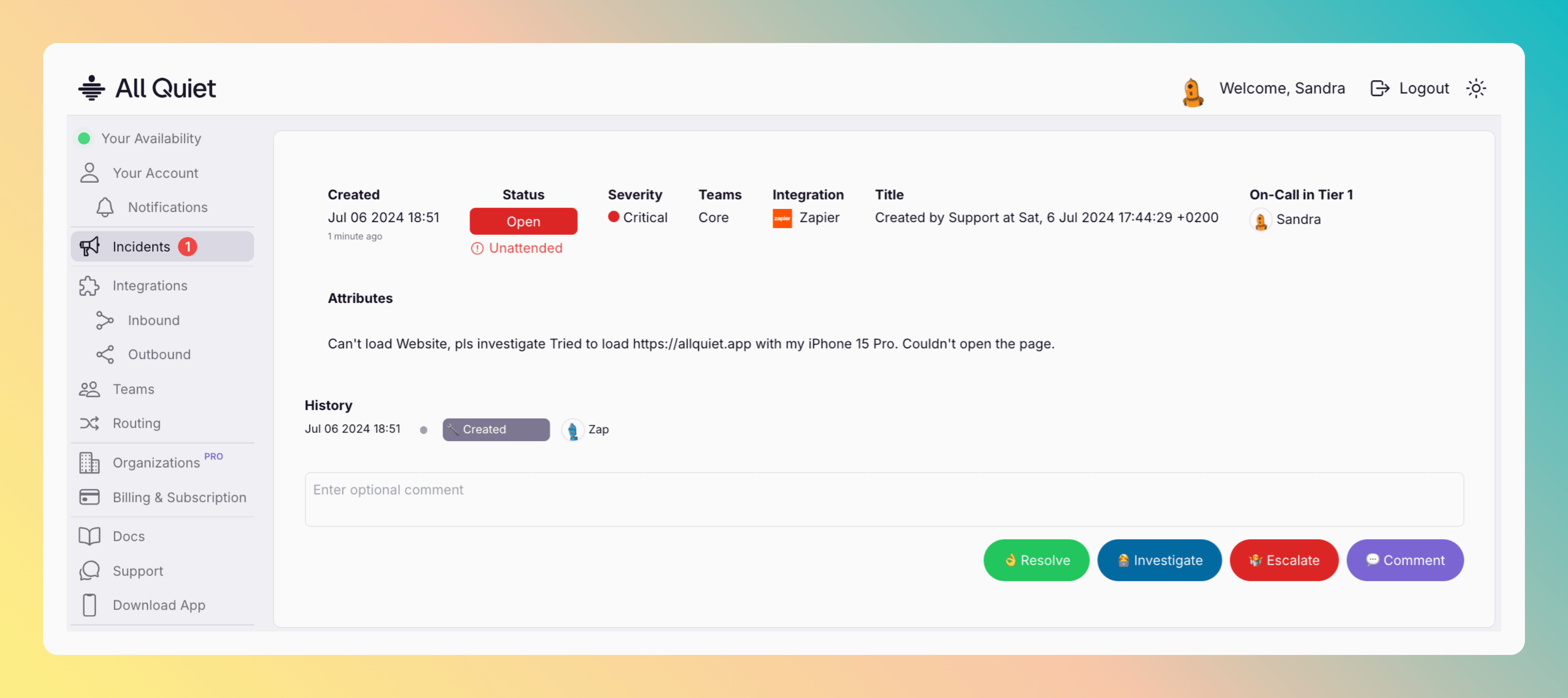
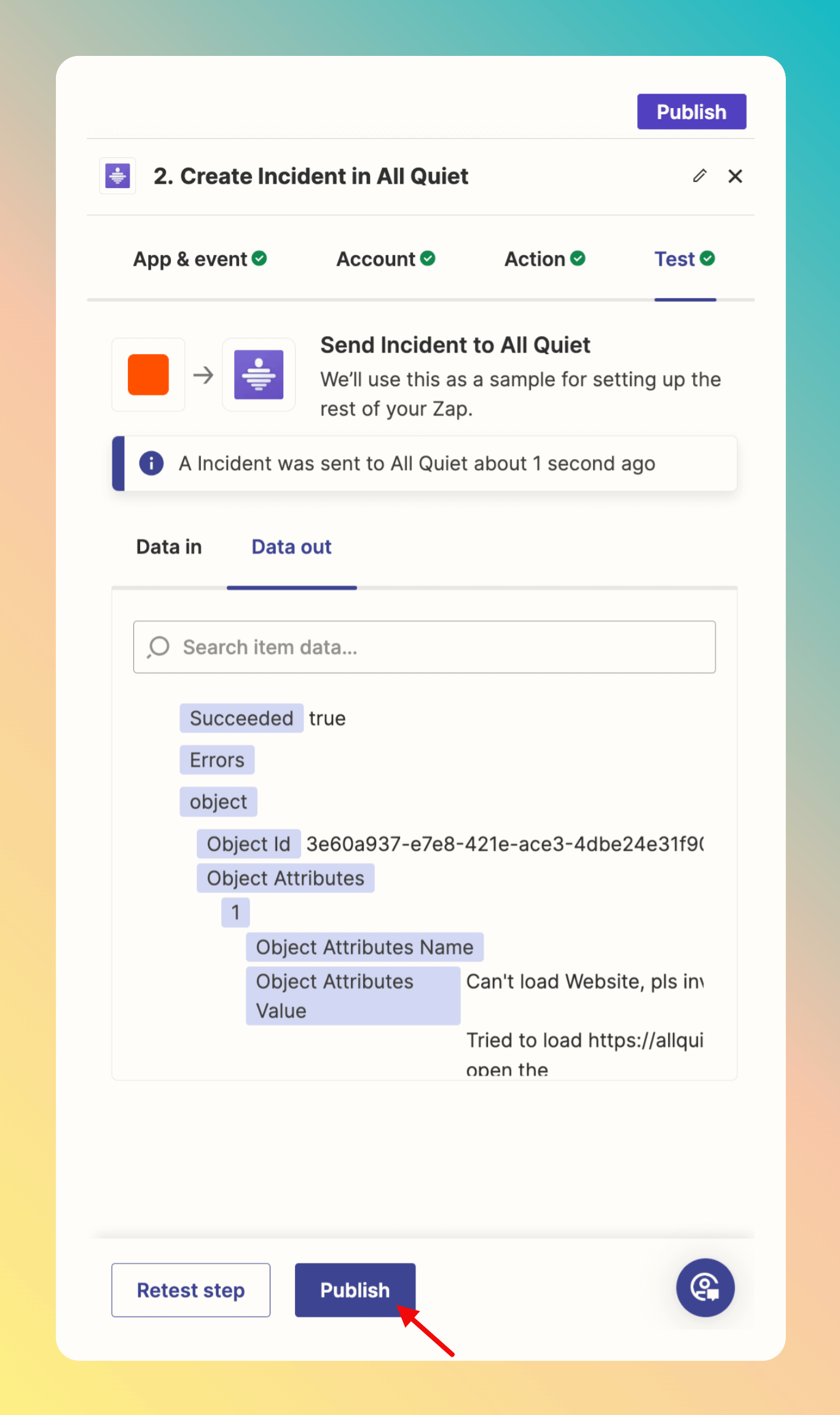
You have successfully created an All Quiet incident via Zapier.
Create Incident Intent Action
Now, we want demonstrate how to create a Zap to update an an existing incident.We will keep working with the Gmail Integration to demonstrate a usecase. Feeld free to use any other Zapier Integration that suits your case as a Trigger.
Resolved, by re-labeling the correonding email in Gmail.
Again, we need to start with setting up the Gmail Trigger. We will not document all steps again, but focus on what’s different.
After selecting the “New Labeled Email” Event and the Gmail Account we want to use, we set up a new Trigger to react to emails with the label Resolved.
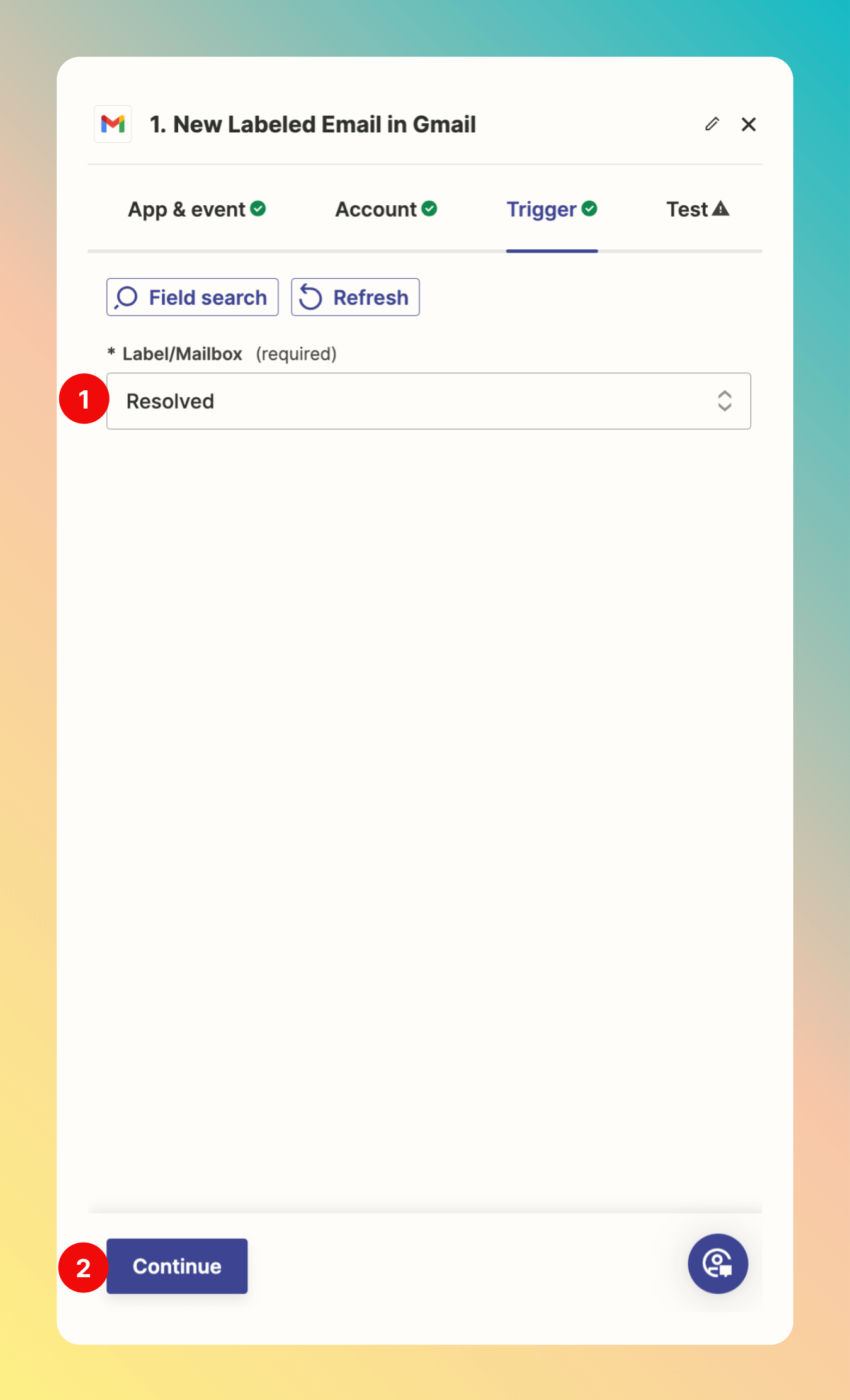
- Select the email we want to use to test.
- Click
Continue with selected record.

Create Incident Intent (2) and continue.

- We Select an
Incident ID. Simplest way is you use one of those already provided by the Gmail Trigger. - We select our
Intent. Remember, we want to resolve incidents if the incident triggering mail was re-labeled asResolved. - We can add a
Messagethat is added to the intent. We stuck to text, here, but you can use variables, too.
Continue.
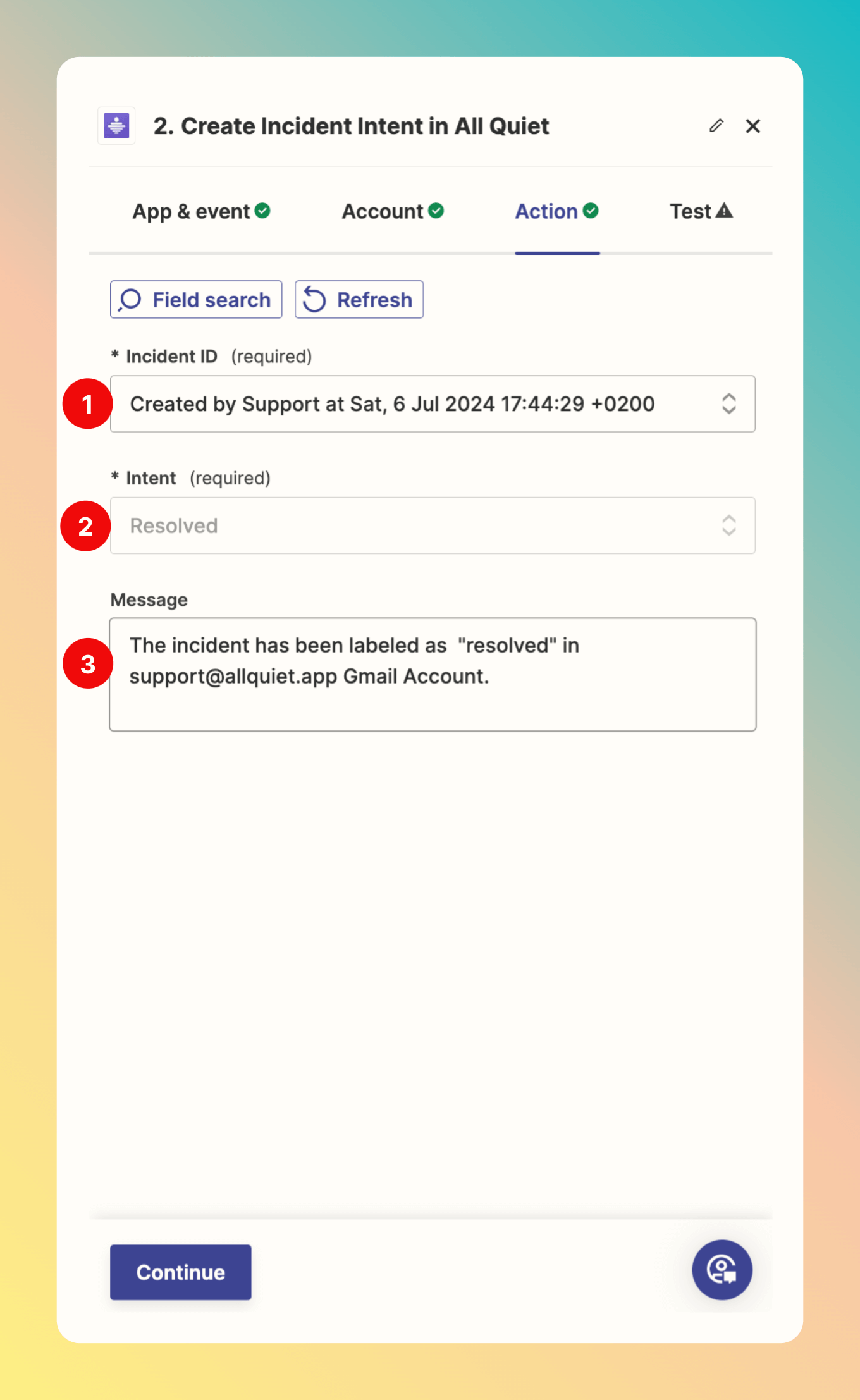
Test step to test your Zap.
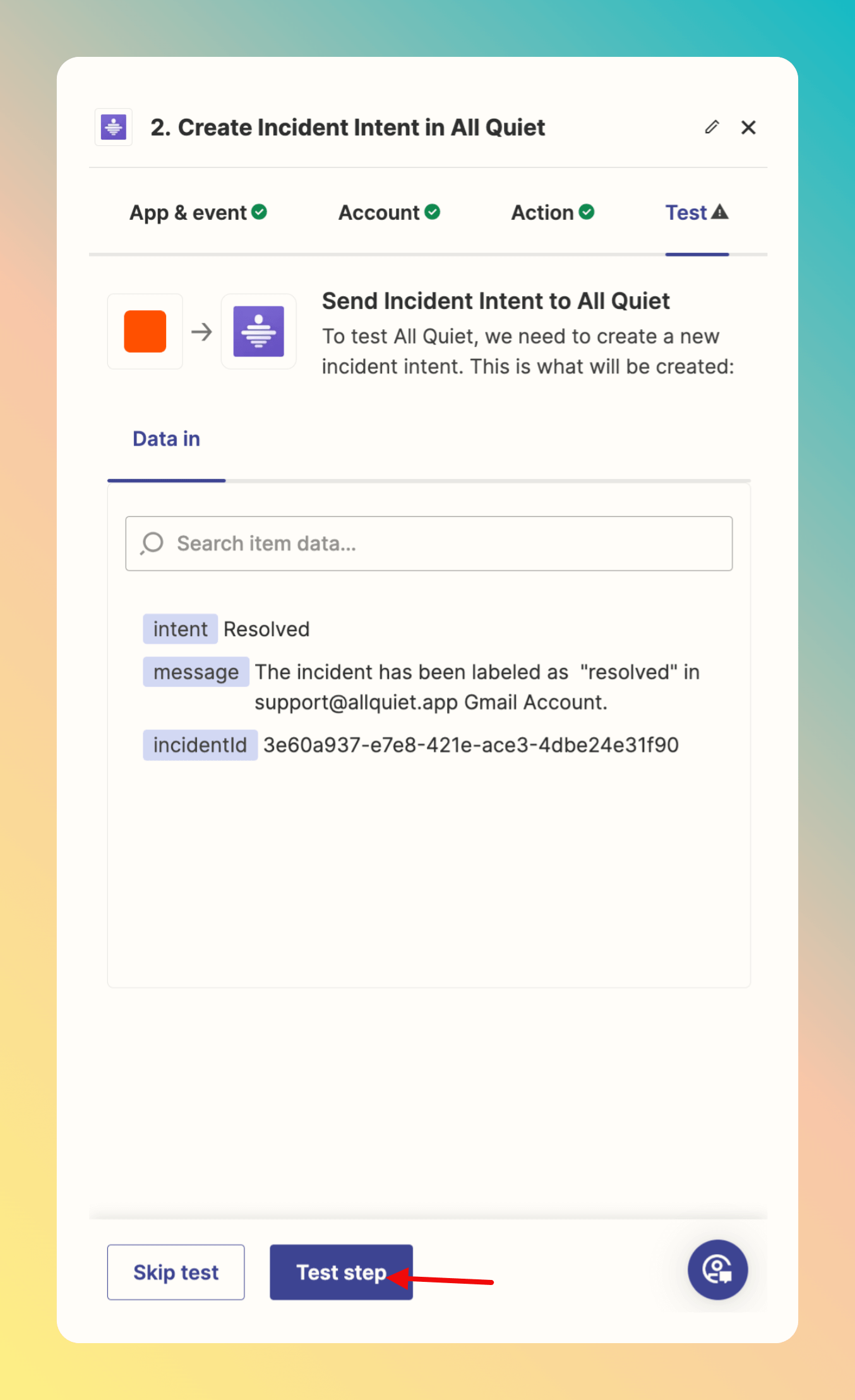
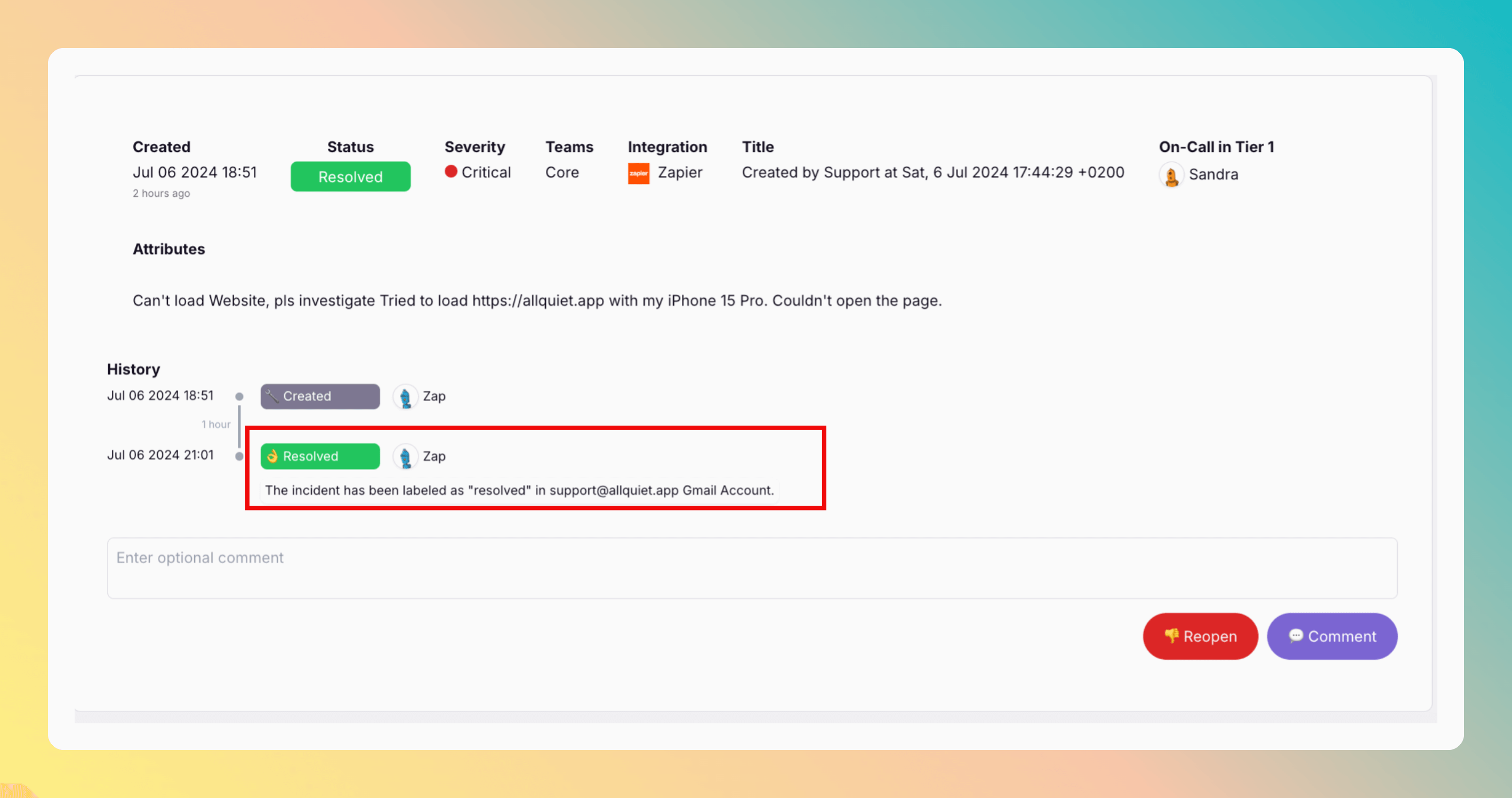
Publish the Zap if you liked the result.
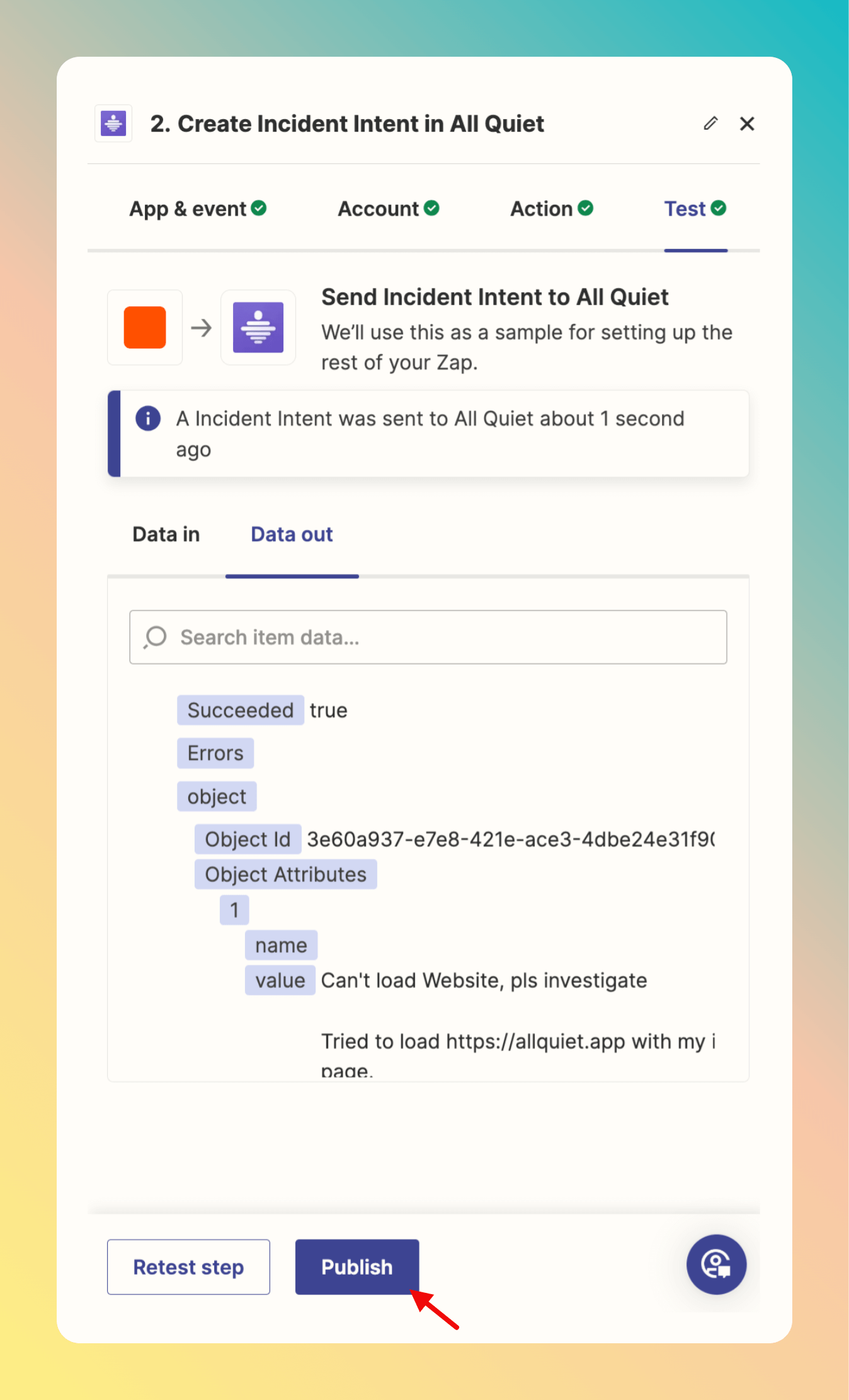
You have successfully updated an All Quiet incident via Zapier.